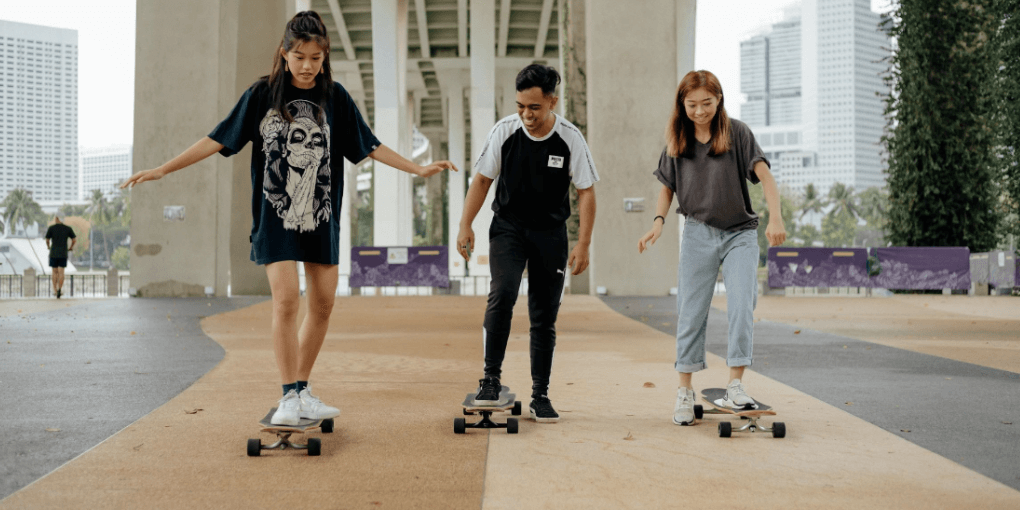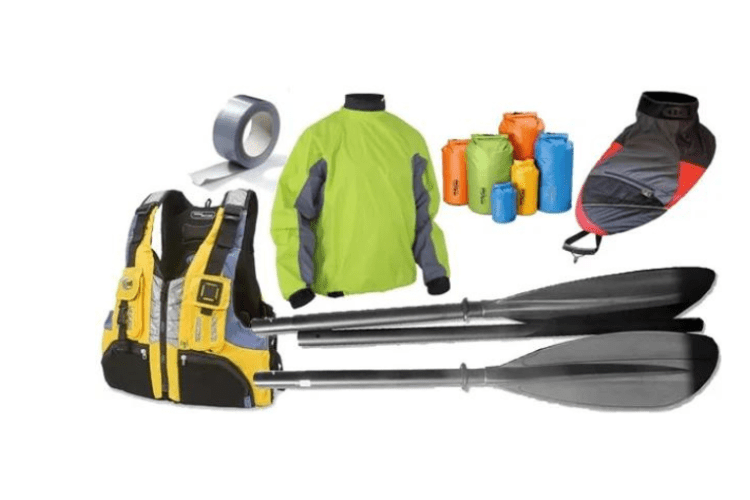Longboard Training Plans: Workouts to Improve Riding Skills
Did you know that in 1965, the first skatepark was built in Tucson, Arizona?
If you want to improve your longboarding skills, practice, and planning are a must. Longboard training plans are organized workouts that improve your riding skills.
As a young longboarder myself, I understand the thrill of the ride and the desire to improve.

As Tony Hawk once said, the only way to get better is to challenge yourself. That’s what these training plans are all about. You need to challenge yourself to become a better rider.
In this blog, we’ll talk about longboarding and share techniques and tips to help you get better at riding.
So, are you ready to take your longboarding skills to the next level? Let’s dive into the exciting journey of skill development and adventure together!
What Are the Benefits of Longboarding?
By enjoying the benefits of longboarding, you can become a better rider and have a lot of fun.
- Fun and Exciting Exercise: Longboarding is a super fun way to stay active and exercise your body. Riding your longboard feels like playing, but it’s also a great workout for your muscles and heart.
- Improves Balance and Coordination: When you ride a longboard, you learn how to balance your body and move smoothly. Practicing on your longboard helps you become better at coordinating your movements.
- Boosts Confidence: As you get better at longboard training plans, it helps you feel more confident in your skills. Learning new tricks and techniques boosts your self-esteem.
- Makes You Stronger and More Flexible: Longboarding works your muscles and makes them stronger. It also helps you become more flexible. So, you can move your body more easily.
- Helps You Make Friends: Longboarding is a popular activity. When you ride, you can meet other people who love it too. Riding with friends or joining a longboarding group is a great way to have fun together.
- Teaches Safety: Longboard training teaches you how to stay safe while riding. You’ll learn about wearing helmets and pads, looking out for cars, and choosing safe places to ride.
- Gives You Goals to Achieve: Longboard training plans help you set goals for yourself. For example, learning a new trick or going faster. Working towards these goals feels awesome and makes you want to keep improving.
Importance of Training for Longboarding
With dedication and practice, you can reach new heights in your longboarding journey.
- Safety First: Longboarding can be lots of fun. But you should learn how to do it safely. Training teaches you to wear safety gear and be aware of your surroundings.
- Builds Skills: Training helps you learn and practice new skills. For example, balancing, turning, and stopping. The more you practice, the better you become at riding your longboard.
- Boosts Confidence: As you get better at longboarding through training, you feel more confident on your board. If you know that you can handle any situation, it’ll make you feel proud and ready for new challenges.
- Sets Goals: Training plans help you set goals for yourself. For example, learning a specific trick or improving your speed. These goals help you stay focused and motivated as you work towards achieving them.
- Improves Technique: You can learn the proper techniques for riding your longboard safely. This helps you avoid mistakes and ride more smoothly.
- Prepare for Challenges: Longboarding can sometimes be tricky. Especially when you encounter obstacles or steep hills. Training prepares you to face these challenges confidently and overcome them.
- Encourages Practice: Training makes practicing fun because you get to try new things and see your progress. The more you practice, the more you enjoy longboarding and become a skilled rider.
Learn the Basic Techniques for Longboard Training Plans
Research indicates that practicing basic longboarding techniques regularly can improve your riding skills by up to 40% in a few weeks.
So, here I’m adding some basic techniques for longboard training plans for you:
- Stance and Balance: You should stand with your feet shoulder-width apart on the longboard. To stay balanced, keep a slight bend in your knees and center your weight.
- Pushing and Braking: You can use one foot to push off the ground and gain momentum. To brake, gently press your foot on the ground or use the board’s braking system.
- Turning and Carving: To turn, shift your weight to the side you want to go and lean in that direction. Carving involves making smooth S-shaped turns by leaning and shifting your weight.
- Kick Turns: You can lift the front wheels of the board off the ground while turning your body and shoulders. Simply use your back foot to turn and steer the board where you want it to go.
- Pumping: Pumping is a technique to gain speed without pushing. You can move your body forward and backward on the board and bend your knees to keep moving smoothly.
- Foot Braking: You can slow down by dragging one foot lightly on the ground behind the board. So, keep your balance and apply gentle pressure to control your speed.
- Carrying and Moving: You should learn how to carry your longboard safely, either by the trucks or with a shoulder strap. You can practice moving around obstacles like curves, bumps, and pedestrians.
- Falling Safely: If you lose balance, try to land on your knees or roll to reduce impact. You should always wear protective gear to prevent injuries.
Know About the Structured Longboard Training Plans
With a structured plan, you’ll get better at riding and have more fun longboarding.
Warm-up Time
You can start by gently moving your body to get ready for riding. You should stretch your arms and legs to avoid getting hurt.
Practice the Basics
You can spend time practicing simple moves like balancing, pushing, and turning. Keep practicing to get better each time.
Cool-down After
When you’re done riding, do some gentle stretches and take deep breaths. This helps your muscles relax and feel better.
For Beginners
If you’re a beginner, you should focus on learning the basic skills and getting comfortable on the board. You can take short breaks during practice and slowly ride longer as you feel more confident.
For More Experienced Riders
If you’re getting better, try learning more advanced moves, like turning sharply or going faster. You can challenge yourself with fun activities to improve even more.
Keep Track of Progress
You can write down or remember how you’re getting better at riding. Celebrate when you learn something new or do something better than before.
Rest and Take Breaks
Don’t forget to rest between practice sessions. It’s important to give your body time to recover and stay healthy.
How to Set Plans for Longboard Training?
Pro longboarder Leticia Bufoni once said, “Planning your training is like mapping your way to success. Without a plan, you might wonder, but with one, you have a clear path to your goals.”
Here’s a simplified explanation of how to set plans for longboard training for you:
- Decide Your Goals: First, you should think about what you want to achieve with your longboarding. For example, learning new tricks or getting faster. Set specific goals that are challenging but achievable for you.
- Plan Your Schedule: Choose how often you want to practice. For example, every day, a few times a week, or on weekends. You can make a schedule that fits with your other activities and responsibilities.
- Choose Your Activities: You must decide what skills you want to work on during each practice session. For example, balancing, turning, or trying new tricks. So, you can plan different activities to keep your training fun and interesting.
- Warm-up and Cool-down: You should start each practice session with a warm-up, like stretching or jogging in place. Then, you can end your session with a cool-down, such as gentle stretches and deep breaths.
- Set Short-Term and Long-Term Goals: You can break your bigger goals into smaller, manageable steps. Set short-term goals for each practice session and long-term goals for your overall progress.
- Track Your Progress: You can keep track of how you’re doing by writing down your achievements and improvements.
- Stay Consistent: You must stick to your training schedule and try to practice regularly. It’ll help you make steady progress and reach your goals faster.
- Have Fun: Longboarding should be enjoyable. So, don’t be too hard on yourself if things don’t go perfectly – just keep trying and have fun.
Learn the Cross-Training for Longboarders
By cross-training, you’ll become an awesome longboarder and enjoy riding even more.
What is Cross-Training?
Cross-training means doing different activities to make you better at longboarding. It’s like practicing different skills to become a pro at longboarding.
Types of Cross-Training
You can try fun things like biking, swimming, or playing games like soccer or basketball. These activities help make your body stronger and improve how you balance and move.
Benefits of Cross-Training
Cross-training makes you stronger and more flexible. It is super helpful for longboarding. It’s also cool because you get to try new activities and have fun while getting better.
Balancing Skills
Doing activities like yoga or martial arts can help you balance better on your longboard. You’ll learn cool tricks to stay steady and ride smoothly.
Building Endurance
Running or playing tag can help you stay active for longer without getting tired. This means you can ride your longboard for a long time without feeling worn out.
Increasing Agility
Dancing or doing cartwheels can make you quicker and more agile. Being agile helps you make quick turns and dodge things while riding.
Cross-Training Schedule
You can add cross-training activities along with your longboard practice to your schedule. You can try to do fun activities at least 2-3 times a week to get better.
Fun and Variety
You should pick activities you love so it feels like playing and not just exercising. Mixing up your workouts keeps things exciting and makes you want to keep going.
Mental Preparation Techniques for Longboarders
By adding these techniques to your longboard training plans, you can boost your overall performance.
- Positive Thinking: You must stay positive and believe in yourself before riding your longboard. Tell yourself that you can do it and have fun while riding.
- Visualization: Imagine yourself riding smoothly and doing cool tricks. Visualizing success helps boost your confidence.
- Breathing Exercises: You can take deep breaths in and out to calm your mind and body. Deep breathing helps you stay focused and relaxed.
- Focus on the Present: Don’t worry about what might happen or what others are doing. You should focus on the moment and enjoy the ride.
- Set Goals: You should have specific goals for each practice session. For example, mastering a new trick or improving your speed. Reaching your goals makes you feel proud.
- Stay Calm Under Pressure: If you feel nervous or scared, take a moment to breathe and calm down. Making mistakes is normal, and you can always learn from them.
- Positive Self-Talk: You can use encouraging words like “I can do this” or “I’m getting better every day.” You should be kind to yourself and celebrate small victories.
- Practice Mindfulness: You must pay attention to your surroundings and how your body feels while riding. Being mindful helps you stay focused and react quickly to changes.
Conclusion
To sum up, longboard training plans are your secret weapon for becoming an awesome rider.
They help you learn new tricks, stay safe, and have a ton of fun while cruising around.
With dedication and a positive mindset, you can achieve your goals.
So, keep practicing, stay safe with your gear, and enjoy every adventure on your longboard.
FAQs
Training plans help you learn new tricks, improve your balance, and ride safely. They also make longboarding more fun for you.
Your training plan should have warm-up exercises, skill practice, and cool-down activities. You can also add fun challenges or goals to keep you motivated.
You should have a good-quality longboard that fits your size and riding style. You should also wear safety gear like helmets, knee pads, and elbow pads.
It depends on how often you practice and how dedicated you are. With regular practice and effort, you'll notice improvement over time.
In many places, it's legal to ride longboards on the sidewalk as long as you let walkers go and ride safely. However, it's always better to check local laws and regulations.
It's not recommended to ride your longboard in the rain or on wet surfaces. It can make the board slippery and increase the risk of accidents.


